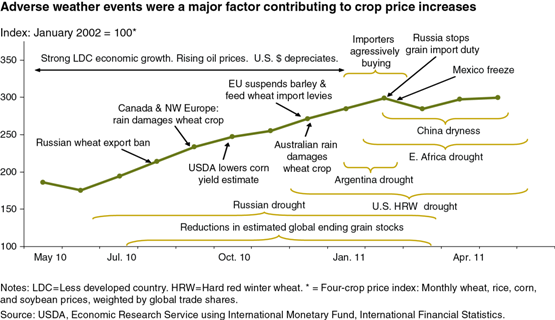Weather also impacted food commodity prices in 2010 and 2011
- by Economic Research Service
- 8/7/2012

As is typical in periods of significant increases in food commodity prices, weather effects on agricultural production were a major factor that contributed to price increases in 2010-11. A series of adverse weather events were compressed into 10 months, beginning in June 2010. Weather around the world was too dry, too wet, too hot, or too cold, sharply reducing expectations for 2010 global crop production and stock levels, which resulted in higher prices. Similar production-reducing weather events occurred prior to the 2008 price peak, but they were spread over a 3-year period (2005-07). Consequently, expectations for world crop production dropped more quickly after June 2010 than during the 2005-07 price increases. On the demand side, consumption of grains and oilseeds continued to rise. As a result, global stocks of aggregate grains and oilseeds declined and prices began to rise rapidly. This chart appeared in the September 2011 issue of ERS's Amber Waves magazine. For more information on the 2012 drought, visit U.S. Drought 2012: Farm and Food Impacts information page in the ERS Newsroom.

